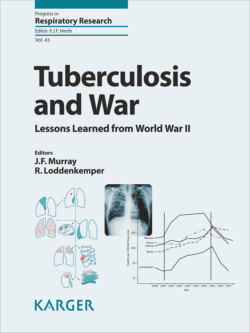Читать книгу Tuberculosis and War - Группа авторов - Страница 14
На сайте Литреса книга снята с продажи.
Neolithic Demographic Revolution
ОглавлениеHunting and gathering kept ancient H. habilis and descendant humans alive and surviving for nearly all the 2 million-plus years of human’s total existence. But it all changed, rather rapidly during the Neolithic Demographic Revolution (or Transition): a major turning point in human history [13]. It all started roughly 10,000 years ago, when H. sapiens began to slowly change from their nomadic lifestyles and settle down permanently and start farming and taming animals. According to Diamond [14], “Plant and animal domestication is the most important development in the past 13,000 years of human history”; it started not long before the beginning of the Holocene epoch (current), about 11,700 years ago. At first, domestication was scant and spotty and took several thousand years to refine, but the outcome was revolutionary. Hunter-gatherers had to either switch roles or disappear, leaving a world that – although still fundamentally primitive – began to add social classes and technological power to a rapidly expanding sedentary population chiefly engaged in agriculture.
Plant and animal domestication occurred by trial and error, but received a boost from the auspicious climatic and environmental conditions of the Fertile Crescent, particularly Mesopotamia and Babylonia, and in parts of China, notably the Yangtze and Yellow River basins. But Diamond [14] believes that what counted most was that these locations greatly favored “those regions to which the most numerous and most valuable domesticable wild plants and animal species were native” – hence, locally handy and ready for exploitation. Starting around 8500 BC, resident planters and breeders of those “pioneer crops” formed the world’s earliest centers of settlement, agriculture, and food production and then went on to spread their talents and technology elsewhere; presumably, the founders also shared their “experienced” genes to their neighbors’ benefit.
In time, additional even more favorable climates than the Fertile Crescent and China were discovered – along with both new and already domesticated plants and animals – and rapidly spread to the remainder of Eurasia and parts of Africa. This progressive relocation identified east-west regions having similar temperate climatic conditions, lengths of daylight, and seasonal variations [15]. The similarities among different latitudes enhanced technological adaptation, such as irrigation and soil enrichment. Much slower spread of food production was observed in a north-south axis of Africa and another in the Americas, where hunter-gatherers and hybrid groups of semi-sedentary foragers remained active until superseded by arriving colonizers.
Rewards of Agriculture and Domestication: H. sapiens’ remarkable conversion to a settled agriculture-based emphasis on farming and food production did indeed change human history forever, and in many ways. First of all, sedentary life permitted women to give birth roughly every 2 years rather than every 4 years, because once women settled down and changed to eating carbohydrate-rich diets, both their fecundity and fertility probably at least doubled, which greatly increased the population. A growing number of inhabitants generated new forms of specialized labor outside of agriculture and kindred activities, which spread to hierarchical administrative organizations, including royalty with leaders and pecking orders. These developments brought more and better goods and tools, the establishment of private property, and the development of individualized decision-making.
Downsides of Agriculture and Domestication: One little-known downside of the shift to agriculture and domestication includes the surprising fact that the nomadic life style of hunter-gatherers meant that they were physically larger and healthier than their sedentary, vitamin-deficient kinsman. Another liability, particularly in the early millenniums, was the increased prevalence of serious acute infectious diseases, which were transmitted by the domesticated animals to which Eurasian settlers were newly being exposed. A corollary consequence of thousands of years of H. sapiens exposure to infected animals is that the natural selection of surviving humans led to a population safeguarded by induced immunity to the prevailing bacteria and other infectious agents and other pathogens. But when unexposed indigenous populations crossed paths with those who had become immunologically protected, for example, during the Age of Discovery between the 15th and 18th centuries, some vulnerable island populations were totally exterminated, and at least 90% of several Native American populations were wiped out following contact, particularly, with immune-shielded European travelers [15].
The quintessential downside to the positive forces of agriculture and domestication, abetted by a continuously increasing population, as described later in this chapter, was the onset of warfare: the mass killing of one or more groups of human beings by other human beings. The bright side of the developing cradle of civilization has been characterized by the development of written language and by feats of human ingenuity, improving health, and rising prosperity. But the dark side created the formation of armies, the advancement of weapons, and the virtually endless practice of war and death.
